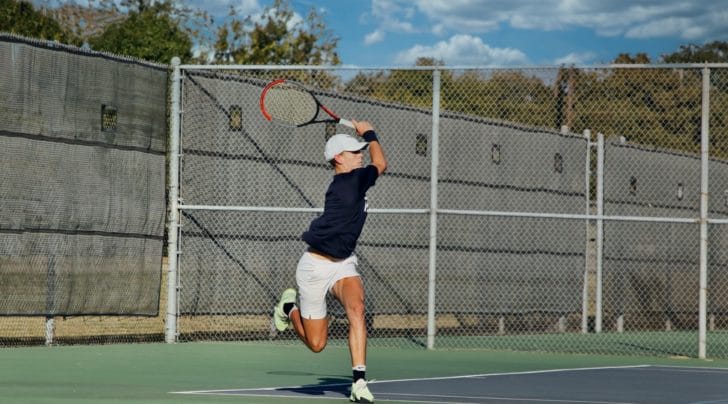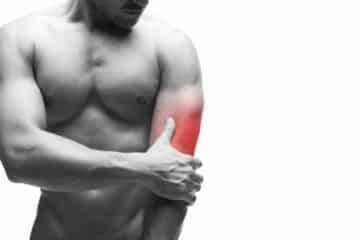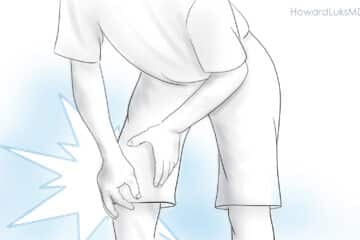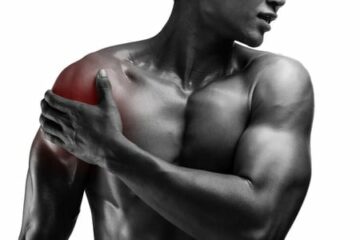
Tennis elbow is a very common problem. If you have pain on the outer side of your elbow, especially when you are lifting something, it is quite likely that you have tennis elbow. I know, you don’t play tennis. Most people with tennis elbow do not play tennis. Tennis elbow will affect almost everyone at some point in their life. You didn’t do anything wrong. The tendons around the elbow are simply starting to wear out. Sometimes they fray, and sometimes they develop tears too. Luckily, tennis elbow if a self limiting process… that means that if you give it enough time, sometimes up to a year it is going to go away in nearly everyone. We used to give injections to everyone with tennis elbow. Now we know that injections might actually cause more damage. You will have no difficulty finding someone to inject you with cortisone, PRP, stem cells, etc. But the question is… should you?
Check out our video on tennis elbow and let us know what you think.














I enjoyed the video, thanks to you both for the commentary. Given that we know – and you stated in the video – surgery is rarely indicated, MRIs tend to be unnecessary, and steroid injections can cause deleterious effects to the tissues, I was surprised to not hear you discuss other non-invasive treatments such as manual therapy interventions and exercise (unless I missed it). Do either of you routinely refer to a Physical Therapist for assessment/treatment, or simply instruct the patient to ‘wait until it goes away’?
As you mention and discuss, just because tissue changes may be seen on imaging does not necessarily direct the treatment, as plenty of people may have tendinosis without associated pain. New pain research would suggest that other targets of treatment could/should be utilized to better help patients manage their pain symptoms. These treatments could revolve around central sensitization and neural tension, among others. I am curious as to your thoughts on this.
I imagine that as healthcare evolves and cost-savings/outcomes are looked at more stringently by payors, we will see these treatments become increasingly utilized as a front-line approach and hopefully avoid the unnecessary MRIs, injections, and the like. It is good to see both of you are already acting upon this.
http://www.jospt.org/doi/full/10.2519/jospt.2015.5841?code=jospt-site
Thank you for all your AMAZING posts! I was wondering if you would recommend immobilizing the wrist. This would reduce use of the extensor ms allowing it to rest and thereby heal?
It can help alleviate some of the pain… it will heal in time on its own in most cases.
I am 55 yr old female, 5’4″, 115. Physically fit and active. 3 yrs ago had physical therapy for ‘tennis elbow’ in dominant arm after weekend gardening marathon- hand-trowel digging, etc. At the end of my therapy, the therapist mentioned that he thought my neck might also be involved; I didn’t pay much attention as I had no neck pain, just really severe pain from outside of elbow down to wrist. Well, the tennis elbow has never gone away, and I occasionally remember, when the pain is too bad to ignore, to do stretches, also ice, and tissue massage( just gripping with my other hand/fingers) to try to alleviate the pain. I do try to limit antiinflammatories. Well, recently, for no reason, symptoms have begun in my right arm, not as severe. Wondering if there is something going on with C7 maybe that needs looking at- but would the cause of the pain affect the treatment of it? That would be the only reason I would want to pursue finding that out. any advice please? thank you !
Good question …
Most recent papers on tennis elbow note that it’s almost a rite of passage :-(. That means that our tendons change with age (tendinopathy). That’s the hallmark finding in tennis elbow. Most everyone will get tennis elbow at some point after 45. In virtually all it will resolve spontaneously within one year. THat being said, it is not unusual for it to occur in the other arm too.
Keep up you exercises… try a Flex Bar by Theraband too.
Good luck